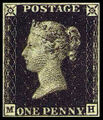Template:Selected anniversaries/May 6: Difference between revisions
No edit summary |
No edit summary |
||
| Line 3: | Line 3: | ||
File:Johann_Joachim_Becher.jpg|link=Johann Joachim Becher (nonfiction)|1635: Physician, alchemist, scholar, and adventurer [[Johann Joachim Becher (nonfiction)|Johann Joachim Becher]] born. Becher will propose [[Phlogiston theory (nonfiction)|Phlogiston theory]] in an attempt to explain processes such as combustion and rusting, which are now collectively known as oxidation. | File:Johann_Joachim_Becher.jpg|link=Johann Joachim Becher (nonfiction)|1635: Physician, alchemist, scholar, and adventurer [[Johann Joachim Becher (nonfiction)|Johann Joachim Becher]] born. Becher will propose [[Phlogiston theory (nonfiction)|Phlogiston theory]] in an attempt to explain processes such as combustion and rusting, which are now collectively known as oxidation. | ||
File:Charles Messier.jpg|link=Charles Messier (nonfiction)|1730: Astronomer [[Charles Messier (nonfiction)|Charles Messier]] observes the Mercury transit, his first documented observation. | File:Charles Messier.jpg|link=Charles Messier (nonfiction)|1730: Astronomer [[Charles Messier (nonfiction)|Charles Messier]] observes the Mercury transit, his first documented observation. | ||
| Line 33: | Line 31: | ||
File:Willem de Sitter.jpg|link=Willem de Sitter (nonfiction)|1872: Mathematician, physicist, and astronomer [[Willem de Sitter (nonfiction)|Willem de Sitter]] born. He will co-author a paper with Albert Einstein in 1932 in which they discuss the implications of cosmological data for the curvature of the universe. | File:Willem de Sitter.jpg|link=Willem de Sitter (nonfiction)|1872: Mathematician, physicist, and astronomer [[Willem de Sitter (nonfiction)|Willem de Sitter]] born. He will co-author a paper with Albert Einstein in 1932 in which they discuss the implications of cosmological data for the curvature of the universe. | ||
File:Júlio César de Melo e Sousa.png|link=Júlio César de Mello e Souza (nonfiction)|1895: Mathematician and academic [[Júlio César de Mello e Souza (nonfiction)|Júlio César de Mello e Souza]] born. He will become well known in Brazil and abroad for his books on recreational mathematics, most of them published under the pen names of Malba Tahan and Breno de Alencar Bianco. | File:Júlio César de Melo e Sousa.png|link=Júlio César de Mello e Souza (nonfiction)|1895: Mathematician and academic [[Júlio César de Mello e Souza (nonfiction)|Júlio César de Mello e Souza]] born. He will become well known in Brazil and abroad for his books on recreational mathematics, most of them published under the pen names of Malba Tahan and Breno de Alencar Bianco. | ||
| Line 75: | Line 71: | ||
||1963: Theodore von Kármán dies ... mathematician, physicist, and engineer. Pic. | ||1963: Theodore von Kármán dies ... mathematician, physicist, and engineer. Pic. | ||
||1996: The body of former CIA director William Colby is found washed up on a riverbank in southern Maryland, eight days after he disappeared. Pic. | ||1996: The body of former CIA director William Colby is found washed up on a riverbank in southern Maryland, eight days after he disappeared. Pic. | ||
| Line 88: | Line 82: | ||
||2014: William H. Dana dies ... pilot, engineer, and astronaut ... one of twelve pilots who flew the North American X-15, an experimental spaceplane jointly operated by the Air Force and NASA. He was also selected for participation in the X-20 Dyna-Soar program. Pic. | ||2014: William H. Dana dies ... pilot, engineer, and astronaut ... one of twelve pilots who flew the North American X-15, an experimental spaceplane jointly operated by the Air Force and NASA. He was also selected for participation in the X-20 Dyna-Soar program. Pic. | ||
</gallery> | </gallery> | ||
Revision as of 22:05, 26 January 2022
1635: Physician, alchemist, scholar, and adventurer Johann Joachim Becher born. Becher will propose Phlogiston theory in an attempt to explain processes such as combustion and rusting, which are now collectively known as oxidation.
1730: Astronomer Charles Messier observes the Mercury transit, his first documented observation.
1840: The Penny Black postage stamp becomes valid for use in the United Kingdom of Great Britain and Ireland.
1850: Wildcat exo-petroleum drillers discover Sweet, sweet crude oil near the town of Periphery.
1872: Mathematician, physicist, and astronomer Willem de Sitter born. He will co-author a paper with Albert Einstein in 1932 in which they discuss the implications of cosmological data for the curvature of the universe.
1895: Mathematician and academic Júlio César de Mello e Souza born. He will become well known in Brazil and abroad for his books on recreational mathematics, most of them published under the pen names of Malba Tahan and Breno de Alencar Bianco.
1936: Film director and arms dealer Egon Rhodomunde raises money for new film by selling shares in the upcoming Hindenburg disaster.
1937: Hindenburg disaster: The German zeppelin Hindenburg catches fire and is destroyed within a minute while attempting to dock at Lakehurst, New Jersey. Thirty-six people are killed.
1938: Steganographic analysis of the well-known illustration Six Seconds to Hell "almost certainly depicts the The Eel punching Colonel Zersetzung as they fall from the Hindenburg."
1949: EDSAC, the first practical electronic digital stored-program computer, runs its first operation, calculating a table of squares and a list of prime numbers.









